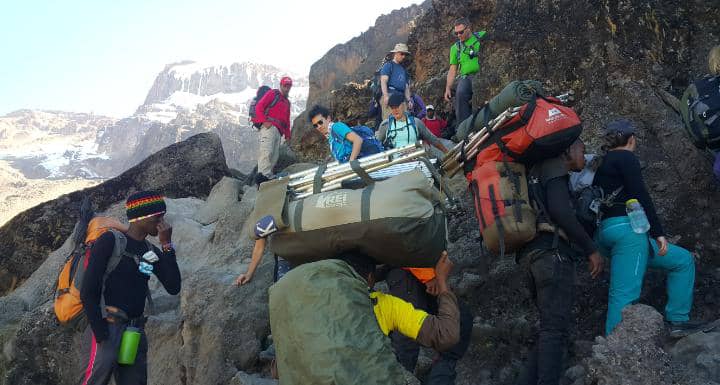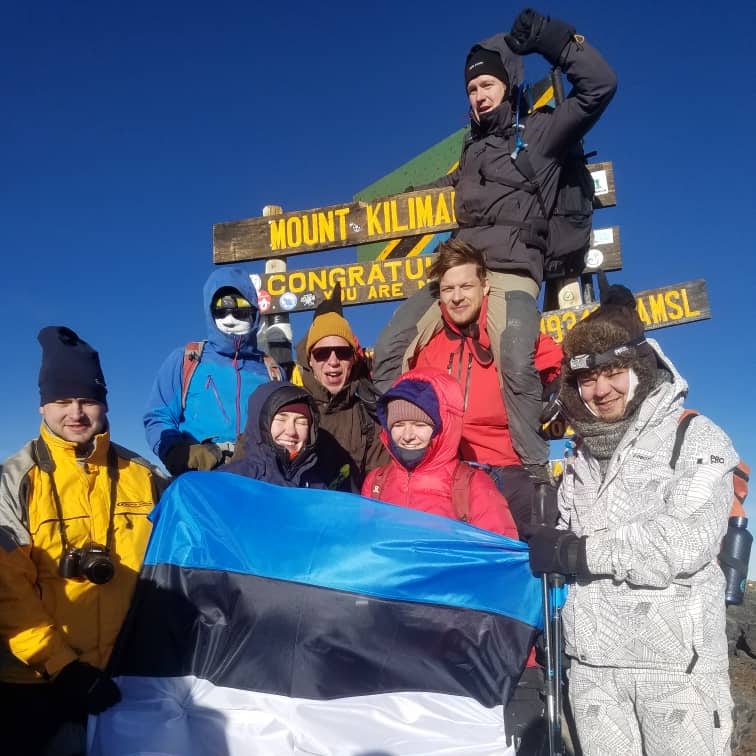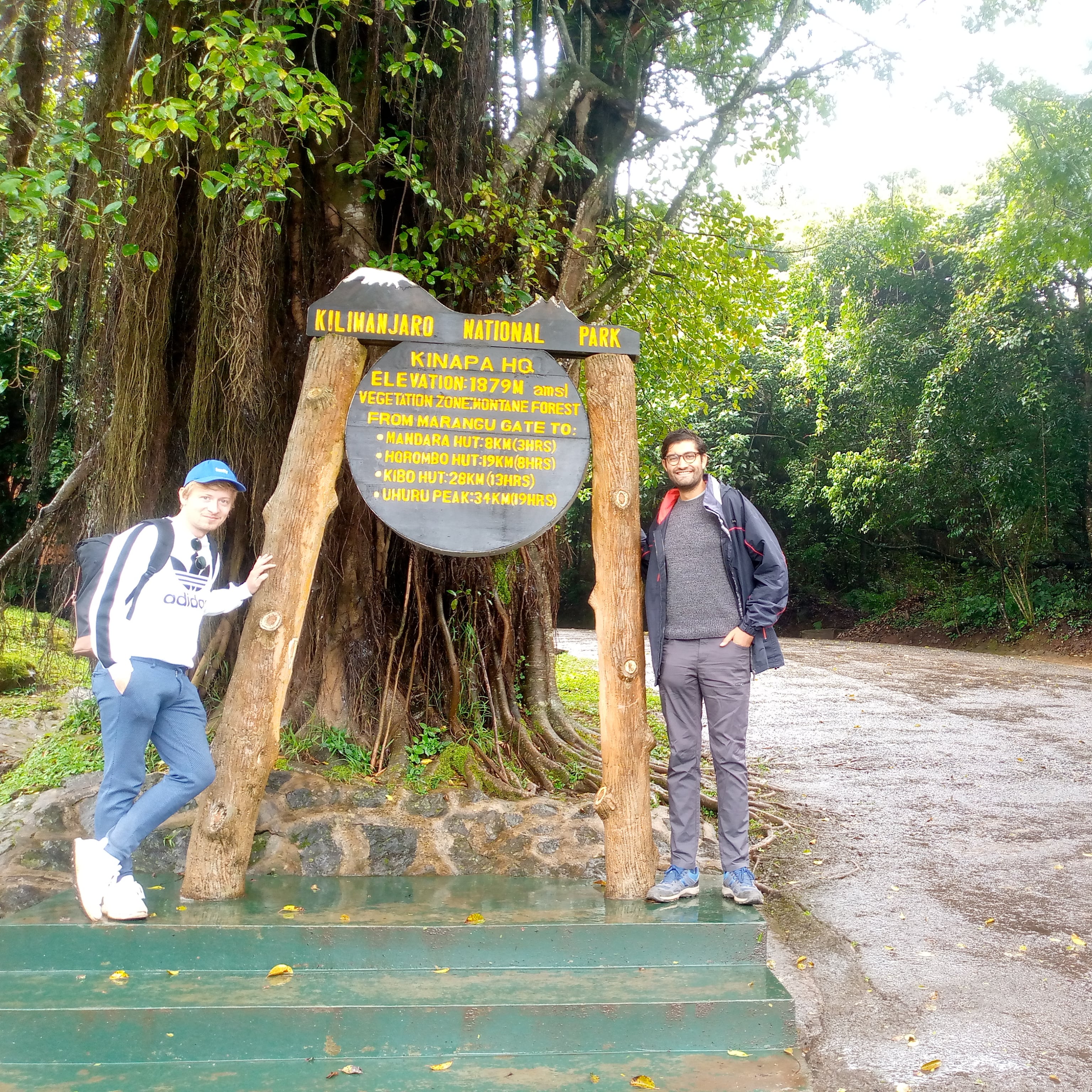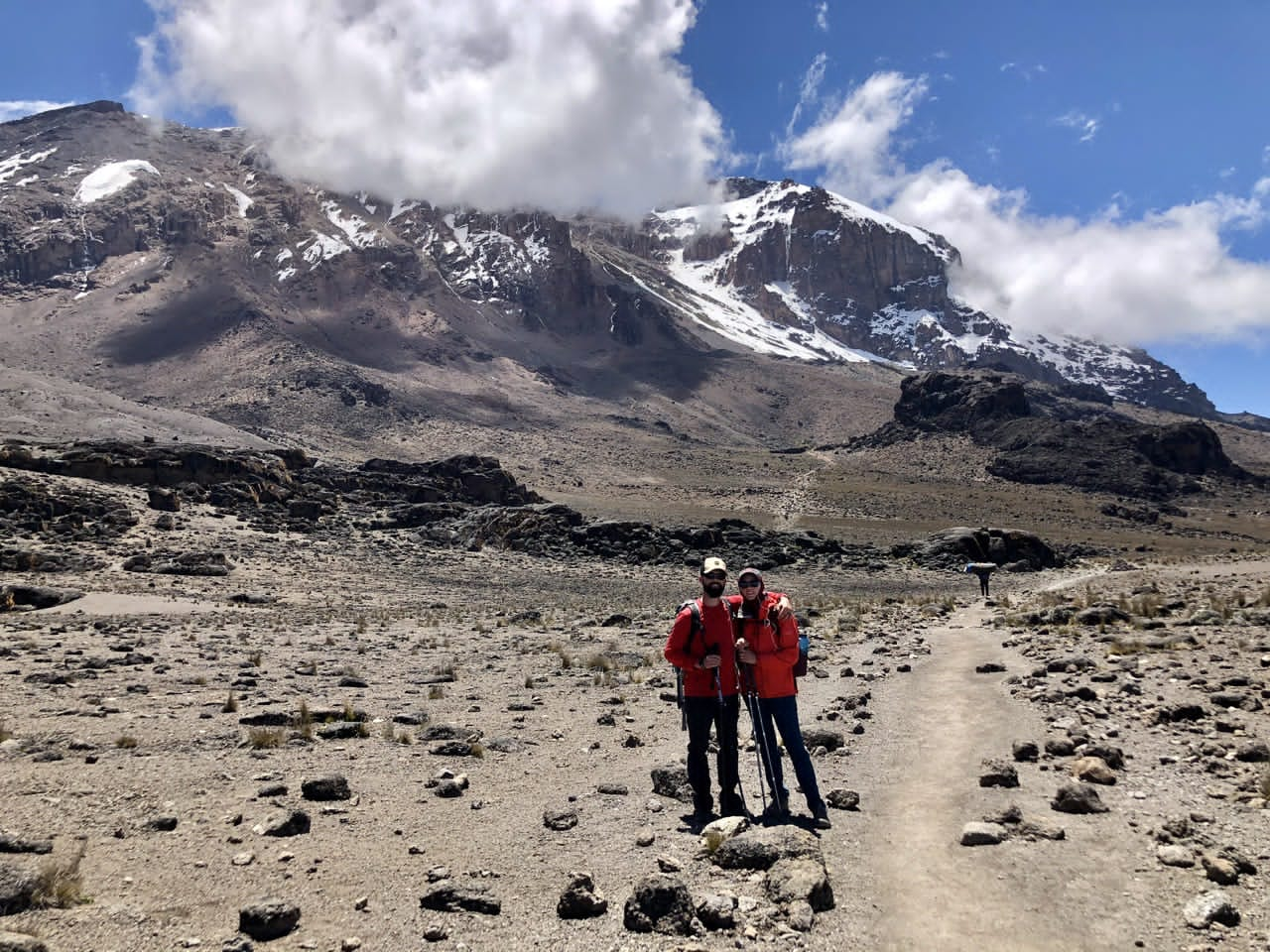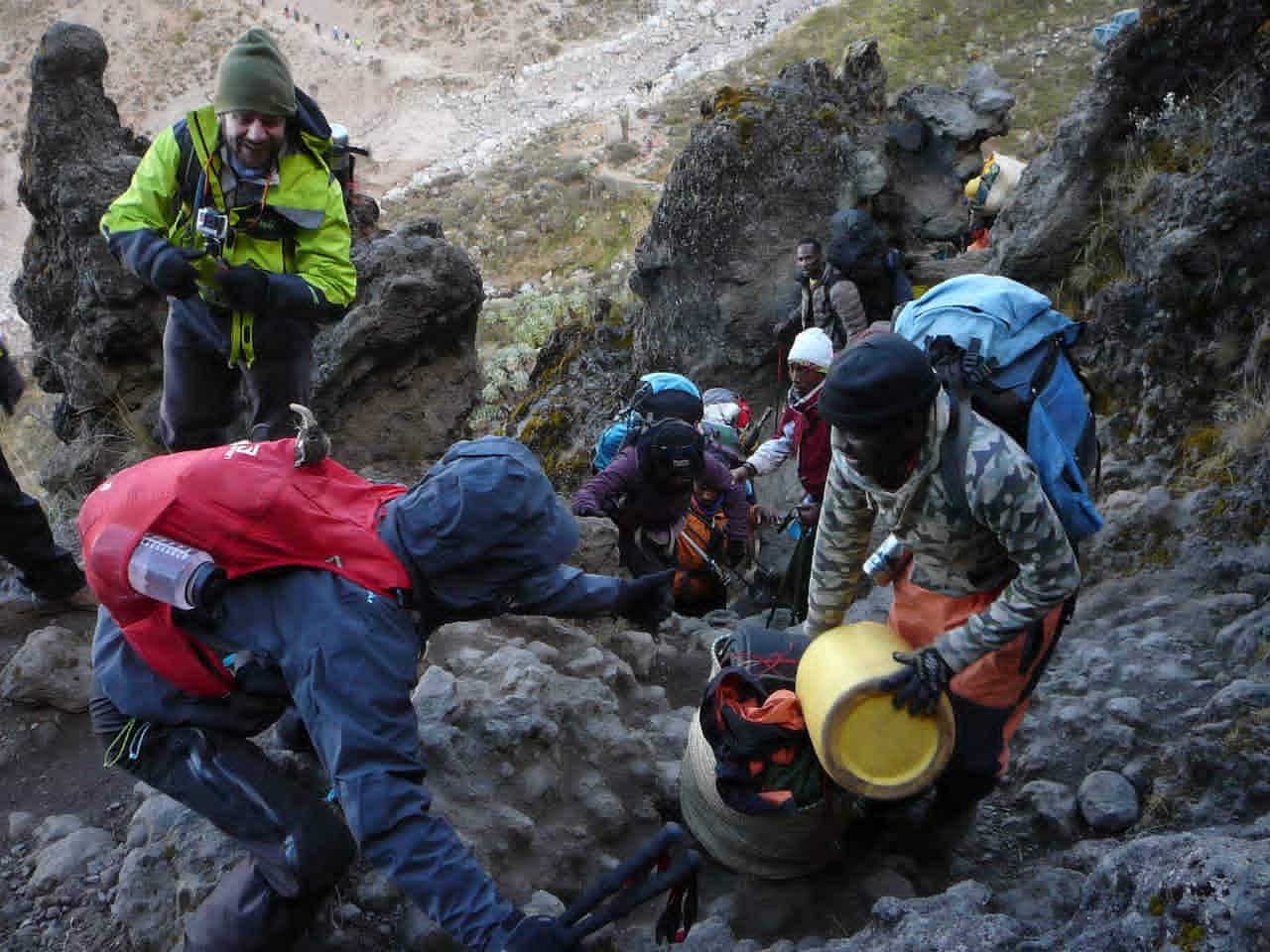Mount Kilimanjaro Sky Running Adventure. Overview.
Experience Africa’s highest peak like never before running through clouds, across volcanic ridges, and into sweeping alpine deserts on a fully supported 5-day sky running expedition. This high-performance itinerary along the Marangu Route blends the thrill of endurance trail running with the challenge of high-altitude ascent, covering approximately 20 km per day and culminating in the summit of Uhuru Peak (5,895 m).
The Marangu Route is unique as the only trail on Mount Kilimanjaro offering hut accommodations, earning it the nickname “Coca-Cola Route” for its relative comfort and accessibility. With bunk beds, solar lighting, and dining halls, it provides a more luxurious and weather-protected experience compared to other camping-based routes.
Your summit push begins in the early morning hours from Horombo Hut (3,720 m), often timed with a full moon for maximum visibility. This section is the most physically and mentally demandingfreezing temperatures, biting wind, and steep scree slopes test every runner's endurance. However, as the sun rises over the glaciers, the landscape transforms, warmth returns, and spirits are lifted. After reaching the Roof of Africa, the descent retraces your steps back to Kibo Hut and continues down to Horombo Hut (3,720 m). There, you’ll rest and recover, marking the final leg of your Kilimanjaro journey before returning to Moshi town the following day to begin your next adventure. For a complete itinerary and details for the 5-day Mount Kilimanjaro Sky running Adventure tour Via Marangu Route, click the link below.
In the morning, after breakfast, we will depart from Moshi and drive to the Marangu Gate of Kilimanjaro National Park. Upon arrival, we will complete the necessary registration and payment verification before beginning our trek. There may be a short delay as our team of guides, chefs, and porters finalizes preparations for the expedition. This includes organizing all the gear and equipment needed for the five-day journey. While most supplies are packed from the start, fresh food will be resupplied from town after the third day on the mountain. Preparation typically takes between 1 to 2 hours, depending on the number of climbers and the day’s logistics.
DAY-1 : MOSHI-MARANGU GATE TO HOROMBO HUT.Distance: ~20 km (with optional loop for training)
Start Elevation: 1,843 m (Marangu Gate)
End Elevation: 3,720 m (Horombo Hut)
Elevation Gain: ~1,900 m
Estimated Run Time: 6-8 hours (depending on pace and acclimatization)
Overnight hut Horombo hut
Your Kilimanjaro sky running journey begins at Marangu Gate, nestled at the edge of Kilimanjaro National Park. After registration and final gear checks, you launch into a steady ascent through the lush, misty montane rainforest. The trail is well-maintained, gently sloping at first but gradually steepening as you climb.
The route to Mandara Hut (2,700 m) covers about 8 km. This segment winds through dense jungle teeming with wildlife—blue monkeys, exotic birds, and towering camphor trees. The humid air and green canopy offer an energizing start to your ascent. After a short break at Mandara, runners continue into heather and moorland zones. Vegetation becomes sparser, and panoramic views begin to open. The terrain shifts to dusty paths, scattered boulders, and volcanic outcrops. This is where the mountain reveals its scale, with long switchbacks and visible elevation gain. To meet the 20 km/day target, a scenic loop or detour near Mandara or Maundi Crater can be included before continuing to Horombo Hut.
DAY-2 : HOROMBO HUT TO MAWENZI TURN HUT BACK TO HOROMBO HUTStart/End Point: Horombo Hut (3,720 m)
Turnaround Point: Mawenzi Turn Hut (~4,300 m)
Elevation Gain: ~600 meters
Estimated Time: 3 to 4 hours (running)
Terrain: Moorland to alpine desert
Overnight hut Horombo Hut
Departing from Horombo Hut, runners head eastward into a dramatic high altitude landscape, quickly leaving behind the last patches of moorland. The trail steadily climbs along a clear, gravelly path as the environment transforms into an alpine desert open, stark, and otherworldly.
Breathing becomes noticeably harder as you ascend, and the terrain becomes more exposed and windy. Despite the thinner air, the relatively even gradient allows for a steady pace, with runnable stretches broken by short, steeper sections.
As you approach the Mawenzi Turn Hut, the towering, jagged silhouette of Mawenzi Peak (5,149 m) looms ahead. The area is vast and quiet, with wide open space at the Mawenzi Saddle offering incredible panoramic views of both Mawenzi and Kibo peaks. At the turn hut, runners typically rest briefly for hydration and photos before retracing their steps downhill to Horombo Hut. The return leg is faster and allows for longer strides and recovery pacing.
DAY-3 : HOROMBO HUT TO KIBO HUT THEN BARAFU HUT AND RETURN TO HOROMBO HUT.Start/End Point: Horombo Hut (3,720 m)
Midpoints: Kibo Hut (4,720 m), Barafu Hut (4,673 m)
Duration: 7–9 hours (depending on pace and altitude adaptation)
Total Distance: ~32–36 km round trip
Elevation Gain: ~1,000 m up / ~1,000 m down
Duration: 7–9 hours (depending on pace and altitude adaptation)
Difficulty: Challenging – Very High (due to distance, altitude, and terrain)
Overnight hut Horombo Hut
The route begins with a gradual but steady ascent from the moorlands of Horombo into the alpine desert of the Saddle, a wide, exposed expanse between the twin peaks of Mawenzi and Kibo. The trail is well-marked and gently sloping, with loose gravel, volcanic dust, and minimal vegetation. Terrain: Open desert, gravel track. Pace Tip: Steady aerobic effort; altitude becomes noticeable above 4,200 m
From Kibo Hut (4,720 m), runners veer off the traditional Marangu Route to connect with a lesser-used trail toward Barafu Hut, the summit base for the Machame and Lemosho routes. This segment is rugged and remote, traversing volcanic ridges and glacial valleys. Trail Type: Technical, with rocky outcrops and steep scree. Scenery: Panoramic views of Kibo’s southern face and the Eastern Icefields. Altitude Caution: You’ll be running above 4,500 m most of the way monitor for AMS symptoms
The descent retraces your route back to Kibo Hut, offering a brief rest and resupply if supported, then continues back across the Saddle to Horombo. While downhill, the dry, rocky terrain still requires careful footwork and energy management. Downhill Benefit: Improved breathing with lower altitude, easier running cadence. Final Stretch: Long but runnable descent from Kibo to Horombo through wide-open desert terrain.
DAY-4 : HOROMBO HUT TO KIBO HUT THEN UHURU PEAK AND RETURN TO HOROMBO HUTStart/End: Horombo Hut (3,720 m)
Midpoints: Kibo Hut (4,720 m), Gilman’s Point (5,681 m), Stella Point (5,756 m), Uhuru Peak (5,895 m)
Total Distance: ~21–23 km round trip
Elevation Gain: ~2,175 m up / 2,175 m down
Duration: 9–13 hours (varies based on pace and altitude response)
Difficulty: Very High – Summit-grade ultra endurance with extreme altitude exposure
The adventure begins with a sunrise departure from Horombo, heading north across the vast Saddle—a high-altitude desert between the peaks of Mawenzi and Kibo. The trail here is runnable but thin-aired, with gently rolling elevation and incredible 360° views. Elevation Gain: ~1,000 m. Conditions: Open, dry terrain; dust and wind common. Tip: Go easy—this is your warm-up for the summit push
The most demanding section of the sky run begins after a short rest at Kibo Hut (4,720 m). The trail steepens dramatically as you ascend through steep scree and switchbacks toward Gilman’s Point on the crater rim, then along the snowy path to Uhuru Peak—the highest point in Africa. Climbing Summary : ( Kibo to Gilman’s Point (5,681 m): Steep scree, 3–4 hrs. Gilman’s to Stella Point (5,756 m): Gentle crater rim path. Stella to Uhuru Peak (5,895 m): Gradual final ascent. ) Terrain: Volcanic scree, icy sections, thin air. Conditions: Sub-zero temperatures, strong wind, altitude effects. Pacing Tip: Power-hike steep parts, short running strides near the summit if possible
After conquering the Roof of Africa, the return route follows the same path back down to Kibo Hut, then across the saddle to Horombo Hut. Though mostly downhill, the rocky terrain and accumulated fatigue make this segment a test of leg strength and mental focus. Descent Time: 4–6 hours. Risks: Dehydration, muscle fatigue, and joint strain. Relief: Air thickens and warmth returns below 4,000 m.
DAY-5 : SKY RUNNING DESCNT FROM HOROMBO HUT TO MARANGU GATE
Start Point: Horombo Hut (3,720 m)
End Point: Marangu Gate (1,860 m)
Distance: ~19–20 km
Elevation Loss: ~1,860 meters
Duration: 2.5–4 hours (running)
Difficulty : Moderate (downhill but long and technical in places)
The final descent from Horombo Hut to Marangu Gate is one of the most exhilarating runs on Kilimanjaro a nonstop altitude drop through three distinct ecological zones: alpine desert, moorland, and montane rainforest.
The trail is well-maintained and clearly marked, making it ideal for a confident, controlled descent. As you lose altitude, the air thickens and energy returns to your legs an incredibly satisfying contrast after days at high elevation.
Horombo Hut to Mandara Hut (~11 km) : The trail begins on rocky terrain and sparse moorland vegetation, quickly transitioning into lush scenery. Views of the plains below open up on clear days. Expect a few technical spots with rocks and erosion channels, but most of it is runnable. Mandara Hut to Marangu Gate (~9 km) : Entering the rainforest, the trail becomes shaded, humid, and alive with birdsong and moss-draped trees. Wooden steps and boardwalks appear in some steeper sections. The air is thicker and warmer, and the terrain can be muddy and slippery—caution and trail shoes with grip are key.
Upon arriving at the Marangu Gate, we will need to sign out. All successful climbers will receive a certificate of completion from the national park. Climbers who reach Gilman's Point (5,681 meters) and Stella Point (5,720 meters) will receive green certificates, while those who reach Uhuru Peak (5,895 meters) will be awarded gold certificates.
After receiving your certificate, you'll be driven back to your hotel in Moshi or Arusha, where you can finally enjoy that long-awaited hot shower and a well-deserved celebration. This is also a great time to express your appreciation to the team by handling tips for the guides, chefs, and porters who supported you throughout the climb.
From here, we will assist you with plans for your next destination, whether it's heading to the airport for your return flight or embarking on an exciting safari tour to explore more of Tanzania’s breathtaking natural wonders. The adventure doesn’t have to end here—there’s so much more to discover in this beautiful country!
The tourist will have to pay $2195.00(P/P) price based on 2 person include the following services as it listed on the table below. for any query please call us or send us a message for clarifications from our team. Book This Package Now
SERVICES WE OFFER FOR KILI TREKKING
Airport pickup on arrival and return on departure time .
2 Nights hotels, meaning full one before climb and after climb.
All transfers to the mountain and back to Moshi town.
Professional, experienced, mountain guides, cookers, and porters
Guides, Porters, and Cooker salaries.
waterproof, four-season mountain sleeping tents (on twin sharing basis).
Sleeping Mattress. (Not via Marangu route)
Emergency Oxygen Cylinder.
Three meals on Mountain (breakfast, lunch, and dinner).
Purified or Boilled drinking water while on the Mountain.
Mess tents with tables and outdoor chairs.
VAT (18% ) and All government fees.
SERVICES WE NOT OFFER FOR KILI TREKKING
Tanzania Visa.
Hotels and Transfers (available as an optional add-on).
Personal trekking equipment such as sleeping bags, hiking boots, clothes, etc (available for rent in here Tanzania too; don't stress if you forget some of the trekking equipment).
Tips and gratuities (Recommended Tipping Amount Per Day; Head guide $20++; Ass.Guide $18++;, cooker $15++;, Summit Porter $12++;, Waiter $12++;,
Porter $10++;).
Portable flush toilet with the toilet tent as an add-on, please see we will need you to pay an extra 150$ per toilet.
Travel insurance.
Personal Expenses (e.g. laundry, telephone, beverages, etc.).
Meals not listed in the itinerary.
Liquors, beers, and bottled beverages.
Related Mount Kilimanjaro Best Routes Options
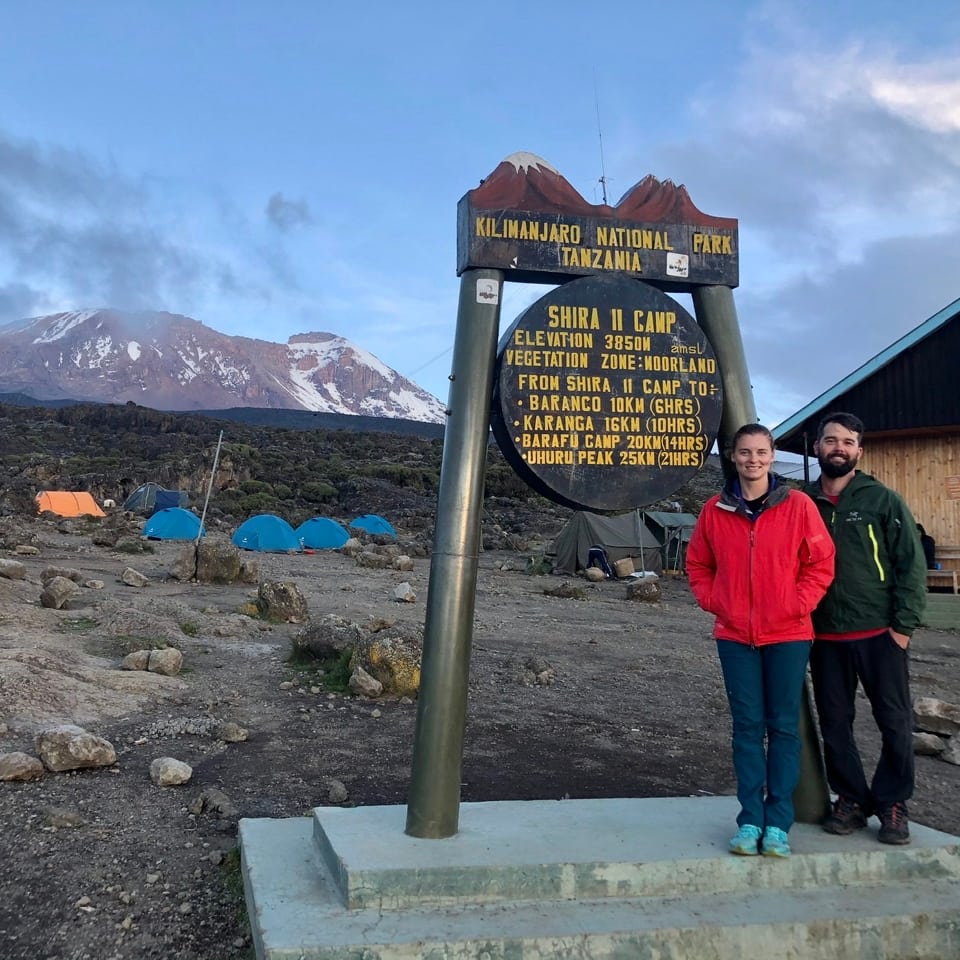
$2485.00(P/P)
Lemosho is extremely beautiful and offers a partly untouched landscape as well as varied flora and fauna. Also for the best successful climb.
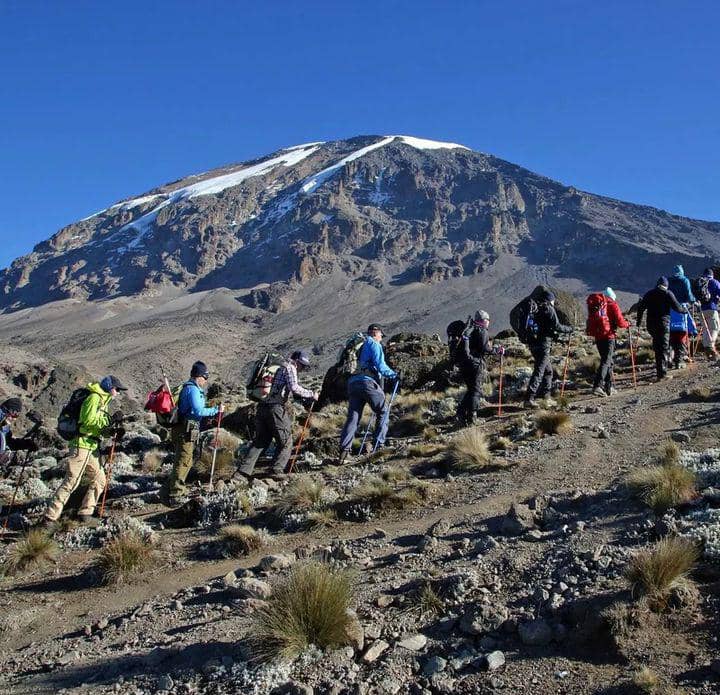
$2315.00(P/P)
Machame Route is the second most popular route to summit Mt.Kili after the Lemosho route, the route approaches from south-west.
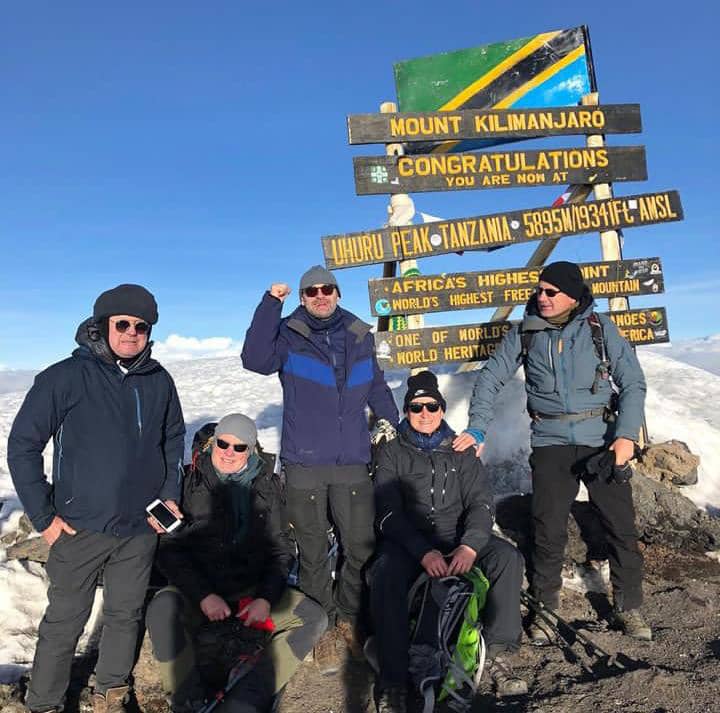
$1865.00(P/P)
Marangu route is widely known as a Coca-Cola route due to its easiest and comfortability, the only way offer hut and beds on the mountain.


